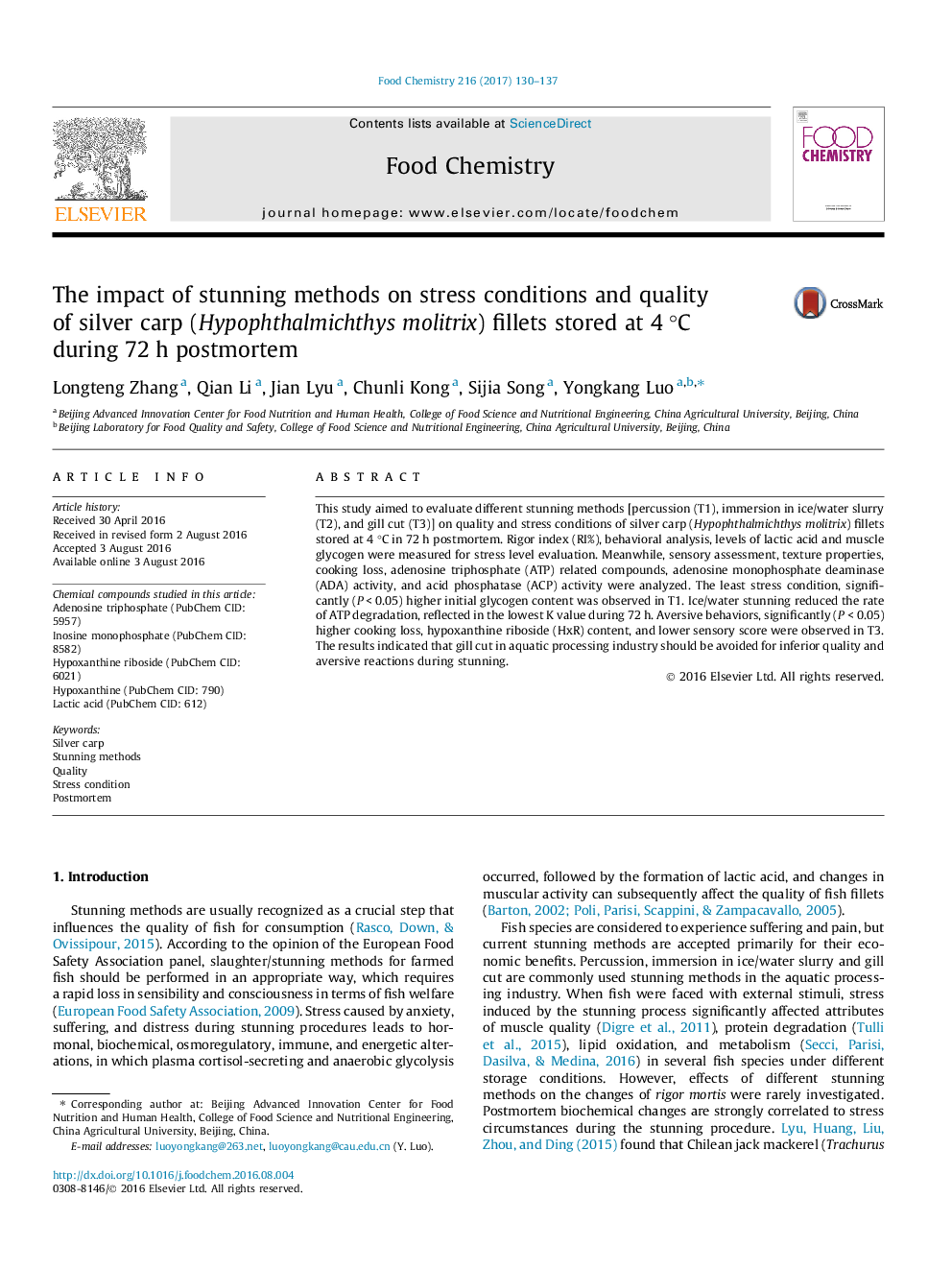| Article ID | Journal | Published Year | Pages | File Type |
|---|---|---|---|---|
| 1183058 | Food Chemistry | 2017 | 8 Pages |
•Effects of stunning methods on stress and quality were measured.•Stunning methods significantly affect the rate of ATP degradation.•Stunning methods strongly corresponded to stress conditions.•Fish stunned by percussion and ice/water slurry resulted in better flesh quality than gill cut.
This study aimed to evaluate different stunning methods [percussion (T1), immersion in ice/water slurry (T2), and gill cut (T3)] on quality and stress conditions of silver carp (Hypophthalmichthys molitrix) fillets stored at 4 °C in 72 h postmortem. Rigor index (RI%), behavioral analysis, levels of lactic acid and muscle glycogen were measured for stress level evaluation. Meanwhile, sensory assessment, texture properties, cooking loss, adenosine triphosphate (ATP) related compounds, adenosine monophosphate deaminase (ADA) activity, and acid phosphatase (ACP) activity were analyzed. The least stress condition, significantly (P < 0.05) higher initial glycogen content was observed in T1. Ice/water stunning reduced the rate of ATP degradation, reflected in the lowest K value during 72 h. Aversive behaviors, significantly (P < 0.05) higher cooking loss, hypoxanthine riboside (HxR) content, and lower sensory score were observed in T3. The results indicated that gill cut in aquatic processing industry should be avoided for inferior quality and aversive reactions during stunning.
